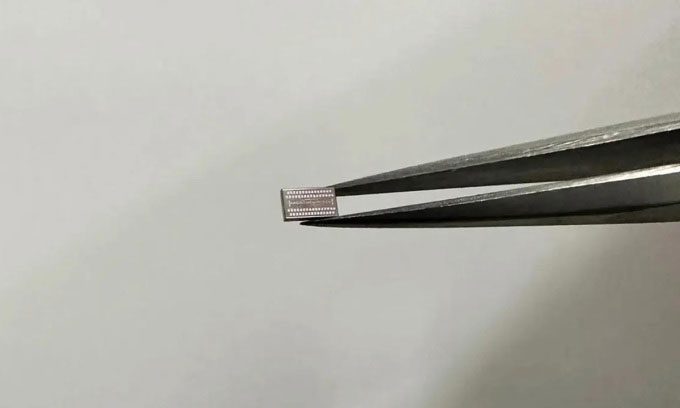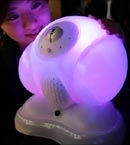New Sensor Uses Millimeter Wave Radar Technology, Offers World-Class Accuracy at an Affordable Price.
Engineers at the University of California, Davis have developed a prototype low-cost radar sensor that is energy-efficient, as small as a sesame seed, and capable of detecting movements as small as 1/100 the width of a human hair, Interesting Engineering reported on October 30. The new research was published in the IEEE Journal of Solid-State Circuits.

Prototype millimeter wave radar sensor capable of measuring tiny vibrations. (Photo: Omeed Momeni/UC Davis)
According to the research, the new design enables the realization of “impossible missions”, allowing the sensor to detect minute movements from objects at a microscopic scale. The sensor promises numerous potential applications in fields such as security, biometric monitoring, and assistance for the visually impaired.
The prototype sensor utilizes millimeter wave radar technology. Millimeter waves are electromagnetic frequencies ranging from 30 to 300 gigahertz, situated between microwaves and infrared. They are used to power high-speed communication networks like 5G and are popular for their short-range sensing capabilities.
Millimeter wave radar emits rapid electromagnetic waves towards targets to analyze their movements, positions, and speeds based on the reflected waves, according to the research team. Millimeter waves have several advantages, such as sensitivity to subtle movements and the ability to focus on extremely small-sized objects.
Most current millimeter wave sensors face issues with power consumption and background noise filtering. The research team at the University of California, Davis also discovered a significant amount of background noise during the development of the new sensor. While attempting to capture the subtle signal of a small, thinning leaf, their sensor became overloaded and lost the signal.
To address the noise issue, the research team modified the design and structure of the sensor. This change helped eliminate noise from the sensor’s measurements. As a result, the sensor can detect changes in the position of a target as small as 1/100 the width of a human hair and identify tiny vibrations as small as 1/1,000 of a hair.
According to the research team, this capability makes the new sensor comparable to or even better than the most accurate sensors in the world. This low-cost device has the potential to aid in the development of advanced millimeter wave radars in the near future.




















































